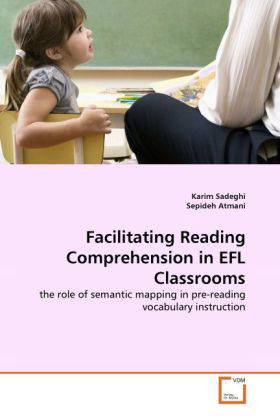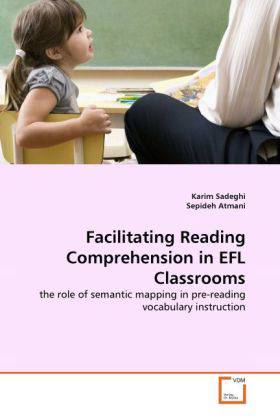
Je cadeautjes zeker op tijd in huis hebben voor de feestdagen? Kom langs in onze winkels en vind het perfecte geschenk!
- Afhalen na 1 uur in een winkel met voorraad
- Gratis thuislevering in België vanaf € 30
- Ruim aanbod met 7 miljoen producten
Je cadeautjes zeker op tijd in huis hebben voor de feestdagen? Kom langs in onze winkels en vind het perfecte geschenk!
- Afhalen na 1 uur in een winkel met voorraad
- Gratis thuislevering in België vanaf € 30
- Ruim aanbod met 7 miljoen producten
Zoeken
Facilitating Reading Comprehension in EFL Classrooms
the role of semantic mapping in pre-reading vocabulary instruction
Karim Sadeghi, Sepideh Atmani
Paperback | Engels
€ 66,45
+ 132 punten
Omschrijving
There is no shortage of literature on how to make the learning process a more enjoyable and lasting one for learners. As far as learning English as a foreign language is concerned, a century of formal teaching has helped little in the way of facilitating the task of learning the language. One thing we know for sure is that effective learning hinges upon making the learning process as enjoyable and the learning materials as meaningful to the learner as possible. Learning vocabulary, as the building block of language, will accordingly be fruitful only when the task includes the elements of joy and meaningfulness. A very commendable technique used as a pre-reading exercise to introduce new words is semantic mapping. This research-based book accordingly presents the findings of a relevant study to look at the efficacy of using semantic mapping strategy for teaching new vocabulary before reading a passage in EFL contexts. The target audience of the book are EFL teachers, researchers and materials developers.
Specificaties
Betrokkenen
- Auteur(s):
- Uitgeverij:
Inhoud
- Aantal bladzijden:
- 116
- Taal:
- Engels
Eigenschappen
- Productcode (EAN):
- 9783639330090
- Verschijningsdatum:
- 22/02/2011
- Uitvoering:
- Paperback
- Afmetingen:
- 152 mm x 229 mm
- Gewicht:
- 181 g

Alleen bij Standaard Boekhandel
+ 132 punten op je klantenkaart van Standaard Boekhandel
Beoordelingen
We publiceren alleen reviews die voldoen aan de voorwaarden voor reviews. Bekijk onze voorwaarden voor reviews.









